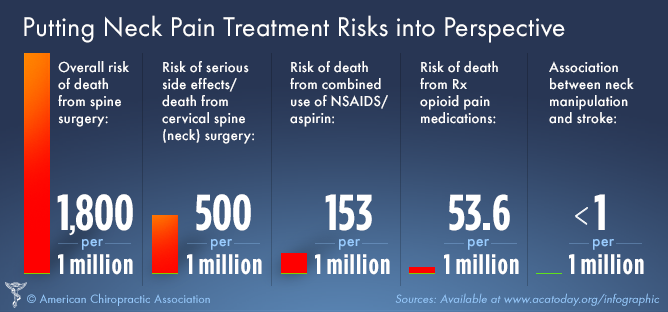The Function Of Nourishment In Back Pain Administration: Foods To Consume And Prevent
The Function Of Nourishment In Back Pain Administration: Foods To Consume And Prevent
Blog Article
Article Writer-Cochrane Wiese
When it involves managing your pain in the back, the food selections you make can dramatically affect just how you feel every day. Recommended Web page being able to ease your pain merely by readjusting what you consume. By understanding the function of nourishment in pain in the back management and recognizing which foods to integrate or steer clear of, you can take proactive steps towards a healthier and much more comfortable way of living. The connection between nourishment and back health and wellness is much more extensive than you might understand-- allow's discover how specific foods can either calm or worsen your neck and back pain.
Significance of Nourishment in Pain In The Back
Nourishment plays a critical function in taking care of back pain. Your diet regimen can significantly impact swelling levels and overall discomfort levels in your back. Consuming a balanced diet abundant in nutrients like vitamins D and K, calcium, magnesium, and omega-3 fatty acids can help in reducing inflammation and enhance bones, which are crucial for back wellness.
Additionally, preserving a healthy and balanced weight via correct nourishment can relieve stress on your spinal column, decreasing the risk of pain in the back.
Moreover, specific nutrients like anti-oxidants found in vegetables and fruits can aid battle oxidative stress and promote recovery in the body, including the back muscles and back.
On the other hand, taking in too much amounts of refined foods, sugary beverages, and undesirable fats can contribute to swelling and weight gain, worsening back pain.
Foods to Eat for Back Wellness
To support a healthy back, integrating nutrient-rich foods into your daily meals is key. Including foods high in anti-oxidants like berries, spinach, and kale can help reduce inflammation in your back, alleviating discomfort and pain. Omega-3 fatty acids located in fatty fish such as salmon and mackerel have anti-inflammatory properties that can profit your back health and wellness.
Additionally, eating nuts and seeds like almonds, walnuts, and chia seeds offers crucial nutrients like magnesium and vitamin E, which support muscle mass function and minimize oxidative stress and anxiety. Incorporating lean proteins such as hen, turkey, and tofu can assist in muscular tissue fixing and upkeep, promoting a strong back.
Do not fail to remember to include https://fernandoidxsn.newsbloger.com/31222705/leading-5-factors-to-see-a-chiropractic-specialist-opening-pain-alleviation-and-wellness or fortified plant-based choices for calcium to support bone health and wellness. Finally, moisten with lots of water to maintain your back discs moisturized and operating ideally. By consisting of these nutrient-dense foods in your diet plan, you can nurture your back and assistance overall spine wellness.
Foods to Stay Clear Of for Pain In The Back
Go with staying clear of processed foods high in sugarcoated and trans fats when looking for remedy for pain in the back. great site of foods can add to swelling in the body, which might intensify back pain. Say no to sweet treats like candy, pastries, and sweet drinks, in addition to junk food items like burgers, fries, and fried hen that are commonly packed with trans fats.
Additionally, steer clear of foods consisting of high degrees of refined carbs, such as white bread, pasta, and pastries, as they can spike blood sugar level levels and potentially worsen swelling in the body.
It's also important to limit your intake of foods high in saturated fats, like red meat and full-fat dairy items, as they can contribute to inflammation. Processed foods like delicatessens meats, chips, and packaged treats are commonly high in hydrogenated fats and must be consumed in small amounts.
Conclusion
Finally, taking notice of your diet and making smart food selections can have a substantial effect on managing pain in the back. By including nutrient-rich foods like berries, fatty fish, nuts, and lean proteins, and staying clear of refined and sweet things, you can help reduce swelling and support on the whole back health. Remember, what you eat plays an essential function in how you feel, so ensure to prioritize your nutrition for a much healthier back.
